By: Elizabeth Depoy | Posted: September 9, 2021 | Updated: April 17, 2023
Co-author: Stephen Gilson
As our bodies change with age, we are often advised by well-meaning health providers, family and friends to relinquish the activities we value and that give our lives meaning.
We prefer the process of rethinking and repurposing everyday, affordable objects — so we can keep doing the “things we love“.
This approach has worked well for us!
We discuss and provide examples of how to rethink outdoor activities such as gardening, animal care, and even simple farming. The principles can be adapted to many other hobbies and interests you may have!
Who should read this: This article would benefit individuals who through an adventurous spirit and creativity wish to surmount aging related barriers to continuing in the activities they care about.
Table of Contents
- Background and Overview
- Rethinking the Activity
- Creative and Adventurous
- Repurposing Everyday Objects
- More Use Cases & Examples
- The Takeaway
Background and Overview
This article is about rethinking and repurposing everyday, affordable objects — so you can avoid or postpone the progressive “giving up of the things you love“, as your body changes with age.
The two key principles underlying our approach are rethinking and repurposing.
- Rethinking is the method about considering the activity you love, and developing ways to do it a little differently — within your capacity. Examples are below.
- Repurposing of everyday objects involves thinking how to use everyday objects differently than the product vendor originally had in mind. Some times, you need to modify the everyday object to accomplish this aim. Examples below.
- Creative and adventurous: We have found that you need to do a bit of “out of the box” thinking to make this approach work. Creative and adventurous refer to this type of reasoning. Read on to see exactly what we mean by that.
This article is mostly about specific examples of rethinking and repurposing that we have used for ourselves.
While the focus is on the types of activities we enjoy, you can take a similar approach to rethinking and repurposing for the jobs, tasks, and hobbies that interest you.
We have applied rethinking and repurposing to taking care of our horses, our home, and our property. And the creativity is fun and stimulating. Here is a video introduction to us.
Rethinking the Activity
What does rethinking even mean?
We are often faced with bodily changes that limit our abilities to continue in “business as usual”. In particular, activities such as gardening, care and maintenance of our homes, and interacting with our animal companions all require the capacity to lift, bend, and be nimble.
For most of us, as we move into later years, capabilities in these three functional arenas commonly wane.
So often, our well-meaning health care providers and loved ones advise us that to stay healthy and safe, we should curtail heavy lifting and any motion that might increase fall risk or injury. Doing so without an alternative may mean stopping the very parts of life, vocation, and avocation that enrich our days and give us meaning.
Some of us growing up with impairments have had significant time to practice what we mean by rethinking, while others encounter bodily changes late in life and are faced with options, some of which are not readily welcomed. But the process of rethinking is innate to most, and something that we do often under our own radar. Bodily changes of aging, however, require us to be deliberate and intentional, using our adventurous spirits and creative sides to remain active.
What is Rethinking?
By rethinking in this context, we refer to the process of breaking down tasks that we cannot do, identifying the barriers, and then looking at alternatives, often involving the “off label” use of simple, existing products. Rethinking harnesses our creative potential, such that what is seen as off limits for our changing bodies becomes not only possible but an ongoing welcome challenge.
Example: We Can’t Bend
We have a wonderful old barn with storage bins built onto the floor.
To feed our 9 horses, several of those beautifully crafted bins would require bending both to store and retrieve the grain sacks.
Several options were on the table:
- Give up the horses,
- Hire a helper,
- Get smaller bags of feed that are lightweight and easy to lift.
Option #1, suggested by our health care providers, has never been an option at all. The horses give us great pleasure and keep us active.
Option #2 is only needed when we have to go away from home. The point of having the horses in our own environment is to interact with them, take care of them, and enrich our lives with the animal-human relationships that are afforded to us through animal care.
Option #3 is not only expensive but inefficient.
Rethink to Avoid Bending
None of the three options solved the problem, so creative thinking was invoked.
Why not just raise the bins to waist height thereby avoiding any bending at all?
So, we did!
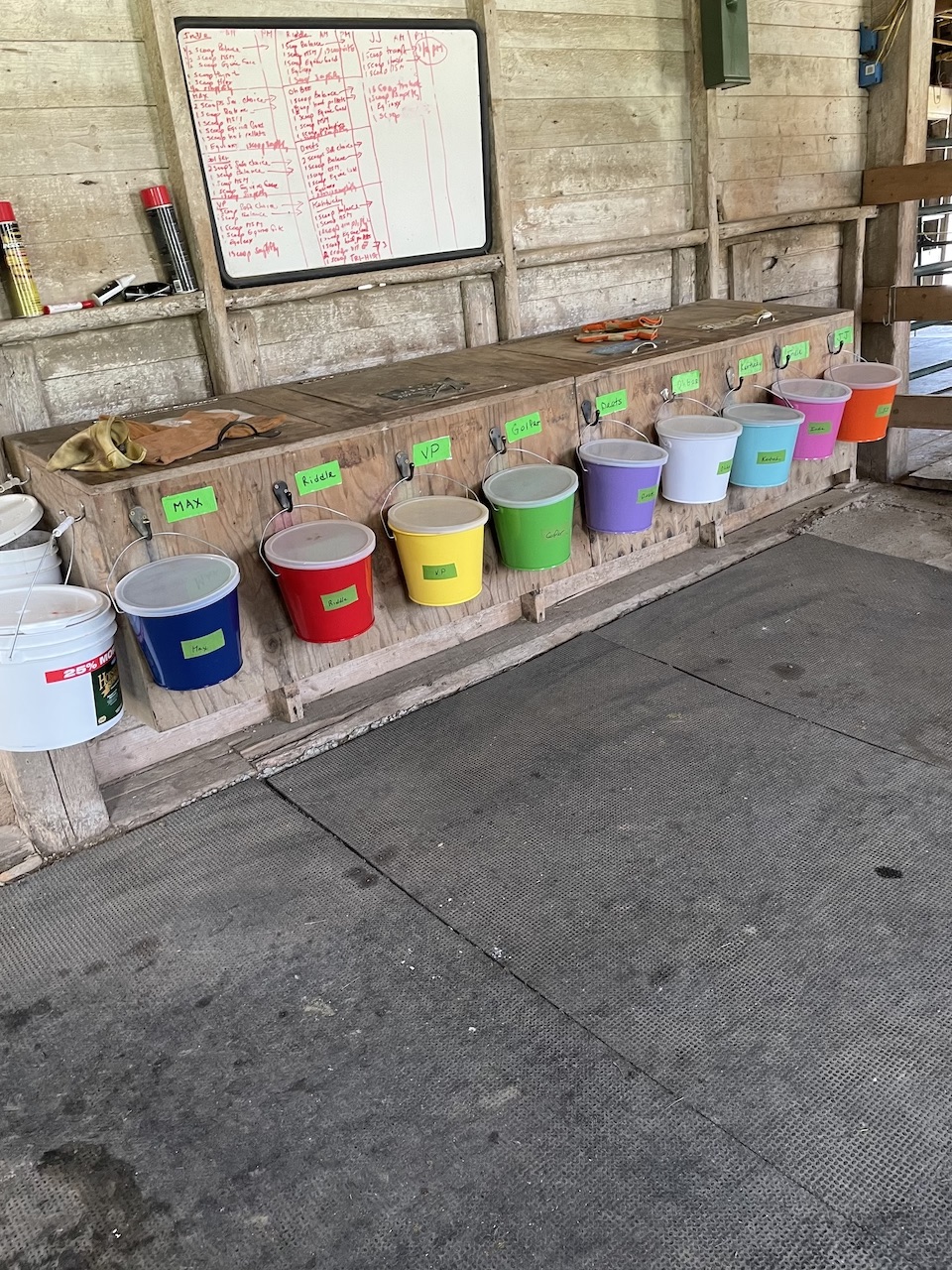
Caption: Avoiding Bending in the Horse Barn
You might notice that each bucket in the photo hangs on a towel hook, sports a different color, and a name label. Besides being playful with décor, the buckets are convenient, raised to waist height for easy reach, inexpensive, and brightly colored.
So each horse can have a bespoke menu, necessary as they too age.
Now you might be wondering how we get the feed into the bins. Stay tuned.
We realize that everyone does not have a barn and horses, but many people do have beloved dogs, cats, and other domesticated animal companions with whom they live. Add on simple tasks of home management and maintenance and then extrapolate. This example is relevant to groceries, gardening, dog food, etc.
Good for Pets Too
To illustrate how we used our barn strategy in our house, we raised the dog feed bins inside the kitchen. Doing so allows us to be frugal and purchase in bulk so that we can afford our animals on our income.
Creative and Adventurous
While these two words may conjure visions of travel to distant lands, they refer to thinking and rethinking how to eliminate barriers closer to and at home. But the sentiments are similar, as the proverbial ”think out of the box” is the guiding principle.
- Creativity is an innate human attribute to be used for anyone who seeks to avoid curtailing enjoyment, albeit with changing and perhaps challenging bodies as we age.
- Adventure simply refers to trying something different.
A simple model which we refer to as forensic analysis provides guidance.
Forensic analysis is used by many professional fields to examine what failed or resulted in an unwanted outcome. When applied to our own lives, why we can no longer engage in valued activities and hobbies is the focus of this creative process. A broad evaluation of both environmental and embodied limitations is in order to identify barriers that prevent us from doing what we want or need to do.
Once identified, creative solutions can be tried, evaluated, and changed if needed.
Repurposing Everyday Objects
Repurposing of everyday objects involves taking an everyday object designed for one purpose, and repurposing it to help you with the activity you want to keep doing — even though your new use was not what the product vendor originally had in mind.
Many everyday objects we use to enable us to keep doing the activities we love may be designed for a different purpose altogether. And often we need to modify them, or combine several everyday objects into a combined system that does what we want it to do. Here is an example, again from the horse barn!
Example: Lifting is a Challenge
Returning back to the barn, neither of us is able to lift any weight.
Taking care of horses often requires heaving heavy objects. So do gardening, animal care, and home management and maintenance.
The options:
- give up the horses,
- get a helper,
- find lifting solutions.
Option #1: not an option
Option #2: we cannot afford nor would we want to depend on others for daily tasks.
Option #3: rethink a simple hydraulic lift.
Forensic Analysis and Repurposing: Lifting
Back to lifting heavy grain bags to fill the bins, forensic analysis taught us that the barriers started at the storage closet, proceeded from the closet to the bin, and then continued with lifting the bags such that they could be emptied into the raised bins.
After looking through many on-line and paper catalogues for ideas, we settled on trying a simple and inexpensive lift.
Hydraulic lifts come in all types and prices. The first one that we tried was a simple scissor lift with a foot pedal to raise it and a quick release handle to lower it. The cost was $69. We had it delivered from a box store right to our door, unpacked it and tried to use it to lift feed bags and empty them into the bins. The lift was 2” short of the bins and thus, the adventure began.
We returned it and tried a second lift, a little more expensive ($99), that reached higher than the first. Bingo.
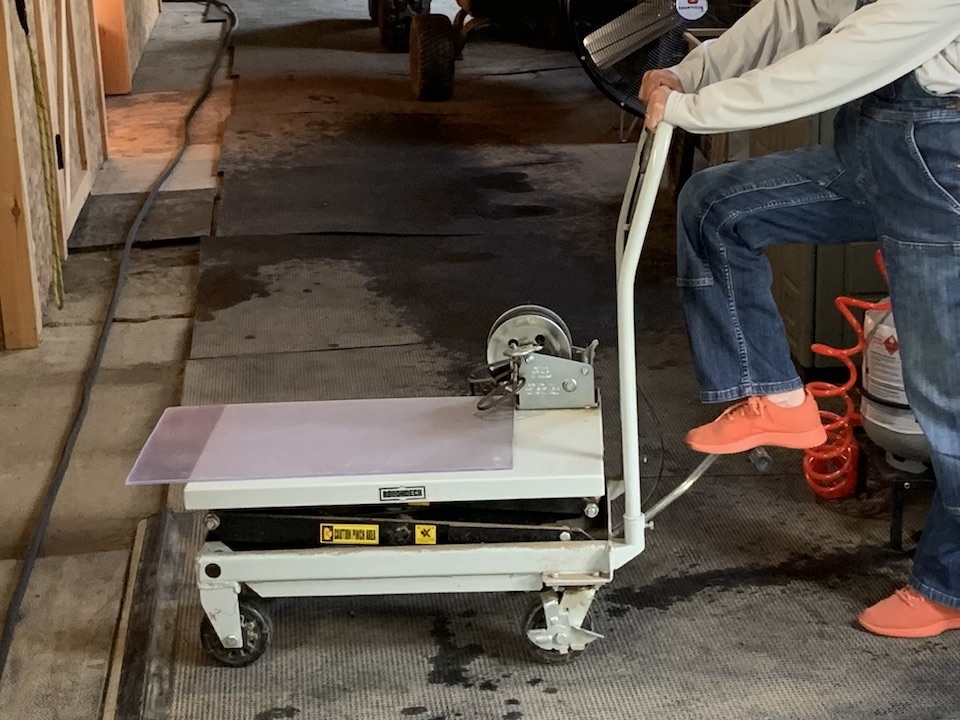
Caption: Step 1, the Lift
But at the loading end, the lift did not descend low enough to reach objects on the floor. The simple solution was to build a plywood shelf at the lowest height of the lift. Bingo again.
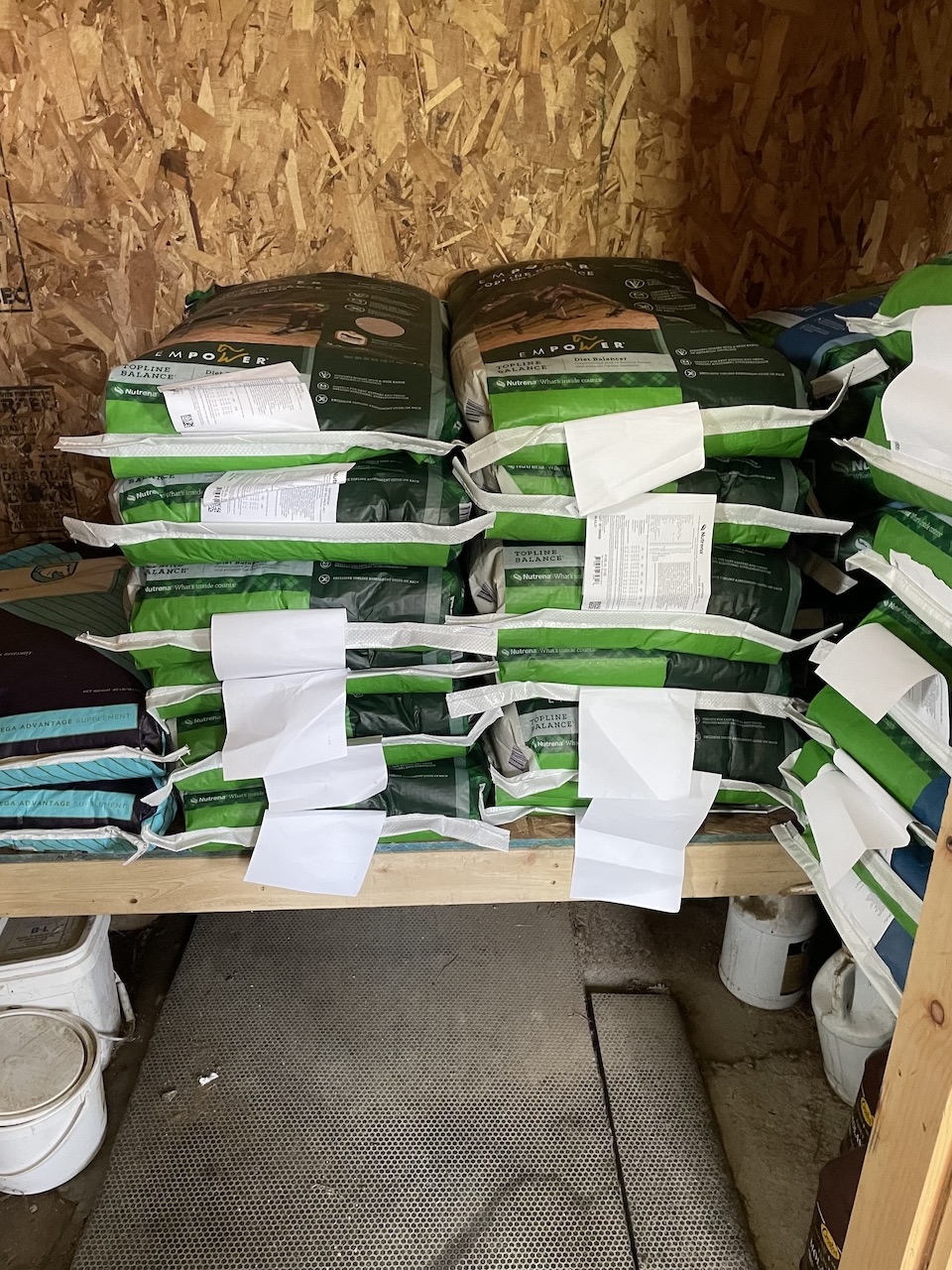
Caption: Step 2, Rethink where the floor is
But now the quandary was how to move heavy objects onto the lift. We recalled transfer boards used to move people from bed to wheelchair, and copied, making one of simple plexiglass.
But we still encountered the problem of snagging and moving heavy objects onto the lift. After looking everywhere, we ended up bolting a simple hand cranked winch onto the lift table. To snag the bags, we found a pair of ice tongs in a flea market. Voila, problem solved.
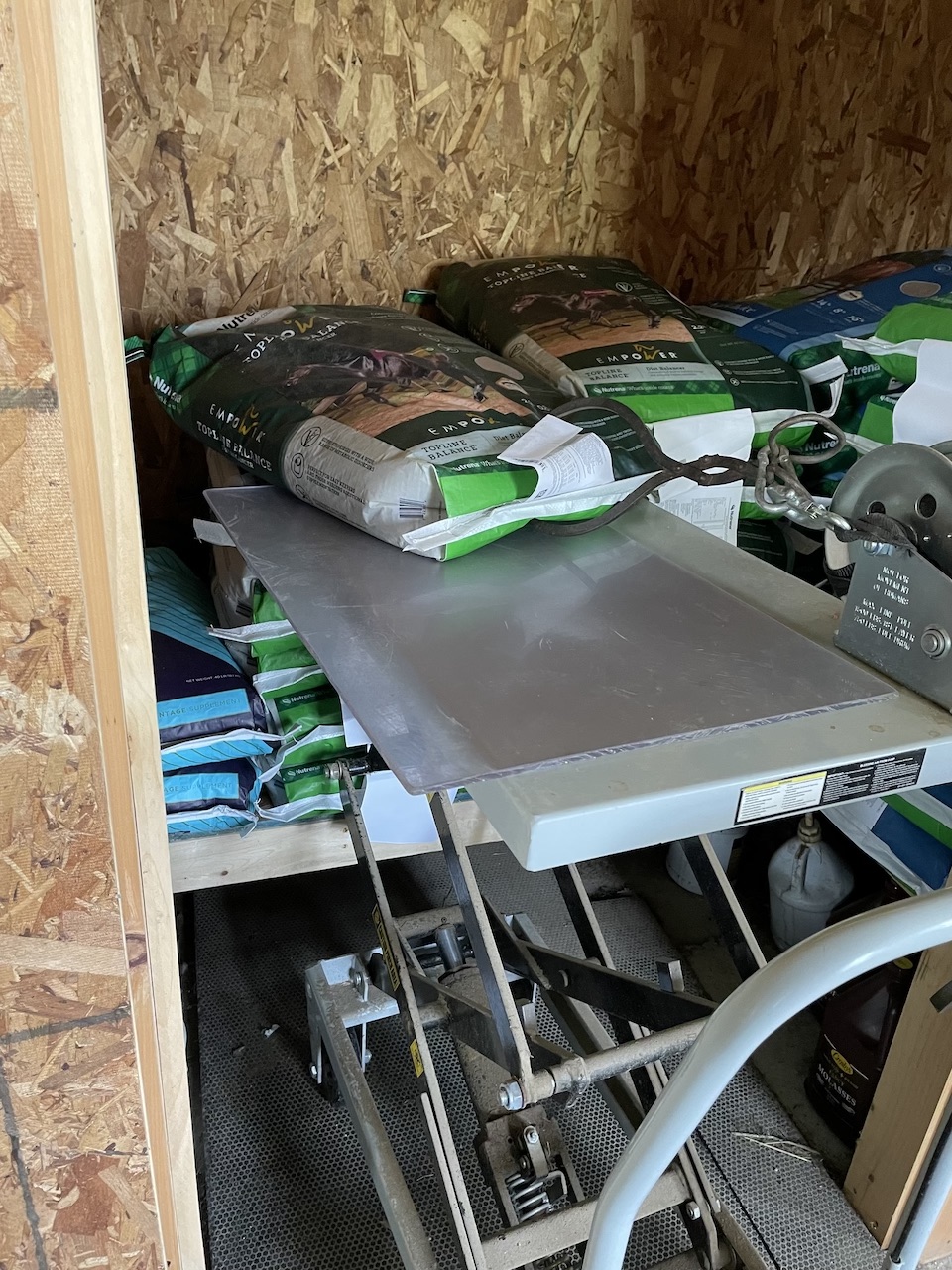
Caption: Step 3, add crank and tongs to grab and pull the bags
Good for Groceries Too
Friends and family now have copied the idea in their own homes, some using it for moving objects from one level to another.
Friends who were facing problems with the typical pattern of three stairs up to the house from the garage now have this solution for moving groceries and heavy household items.
They have avoided costlier stair lifts and are able to gracefully manage in their homes.
More Use Cases & Examples
We have way too many examples to list here. So we just discuss several that have wide application way beyond a horse farm.
Prolonged Sweeping is Difficult
A simple battery powered leaf blower can double as a broom for those who find sweeping difficult. We often use the broom for short, simple tasks and it doubles as a walking stick. (See opening Photo).
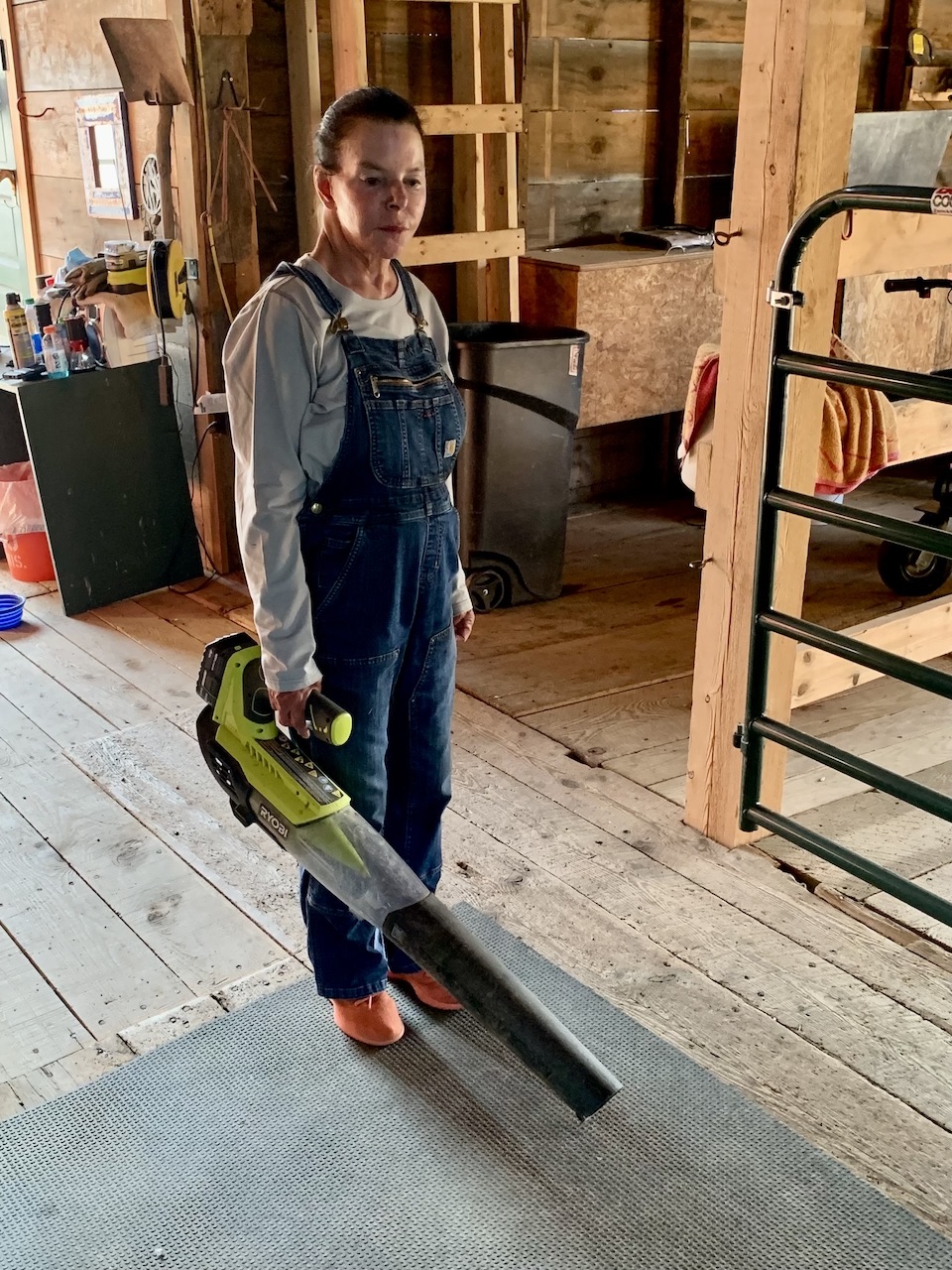
Hard to Carry Things up Stairs
An inexpensive electric hoist ($59 at most box stores) can replace carrying awkward or heavy objects up the stairs.
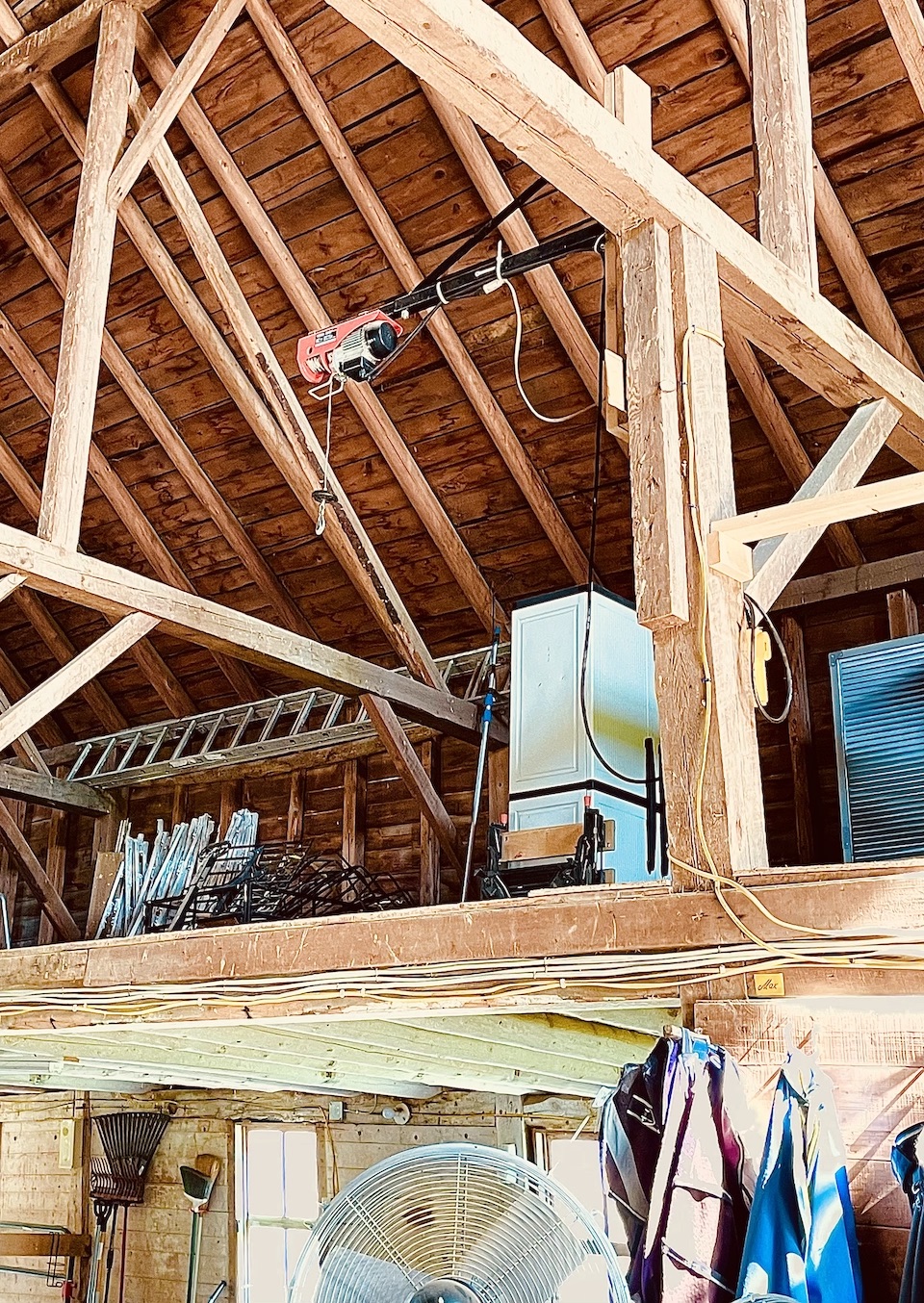
Pulverizing Pills
A coffee grinder to pulverize pills.
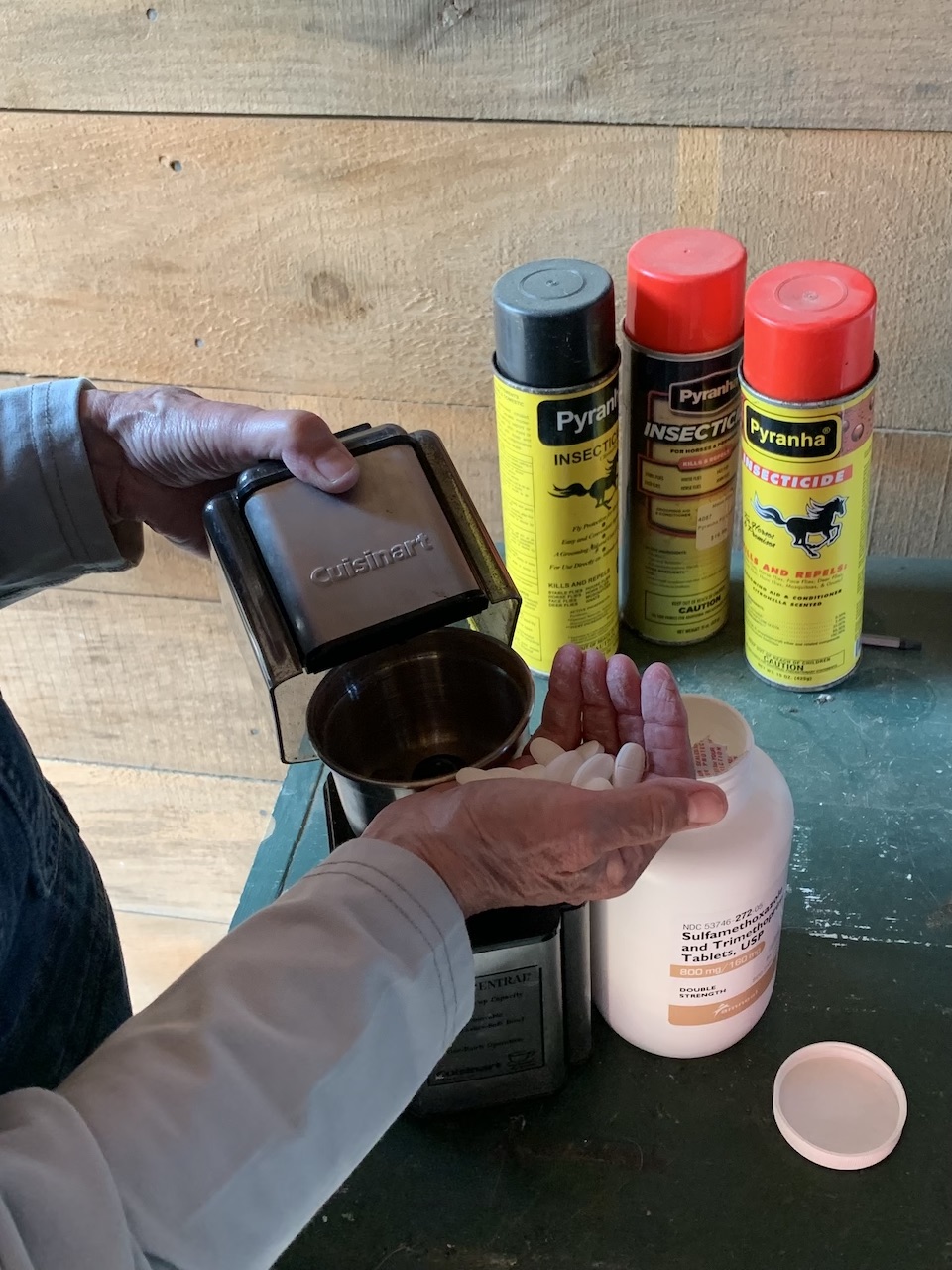
Gardening and Heavy Objects
A battery powered dump cart fitted with a hand crank winch for gardening and moving heavy objects such as manure buckets, dirt, fertilizer, crusher dust, and planters.
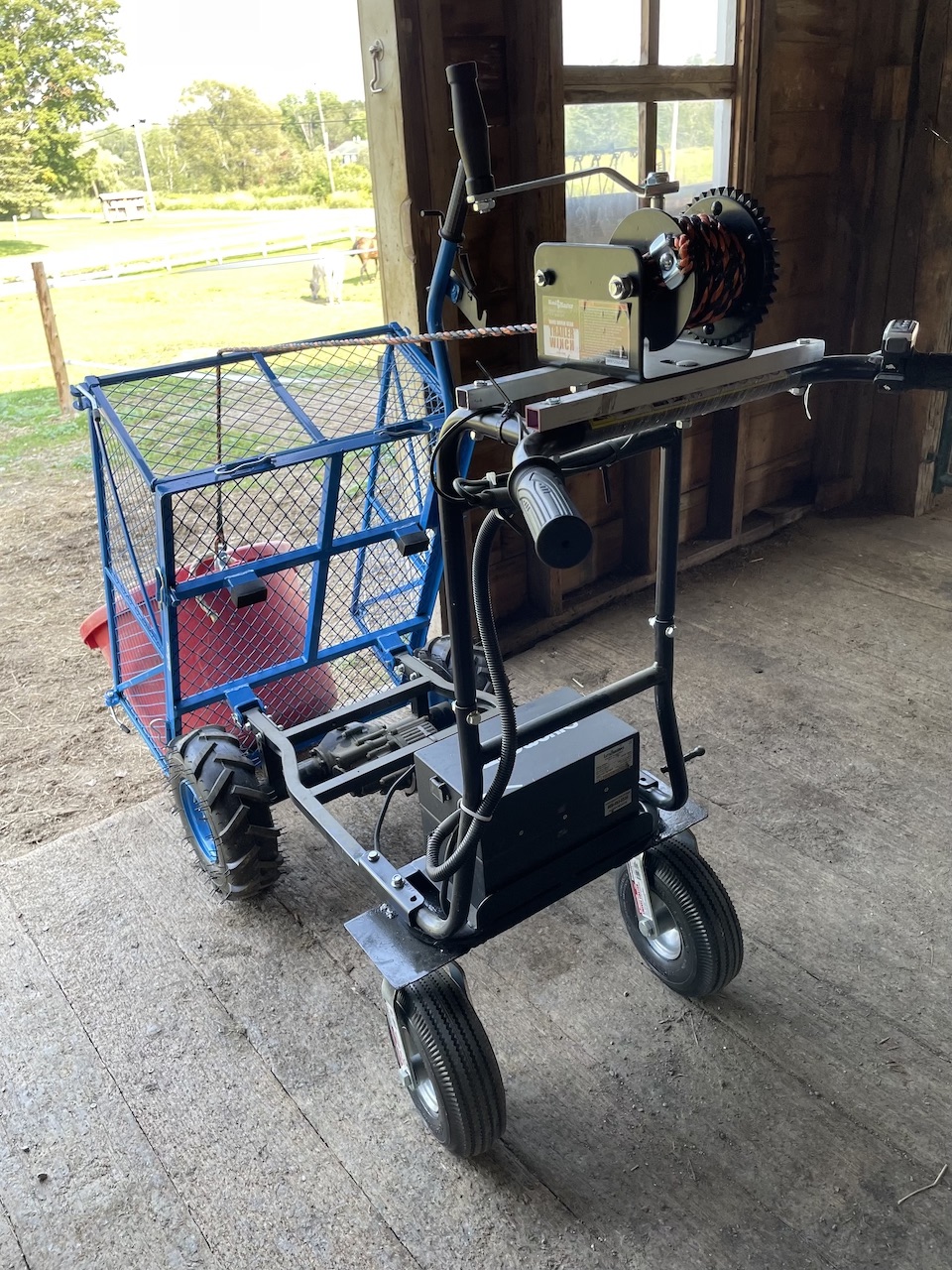
Reachers. Avoid the Step Stool or Difficult Bending.
Placement of numerous sturdy reachers to retrieve objects just outside of a comfortable reach in any part of the home, garage, or barn.
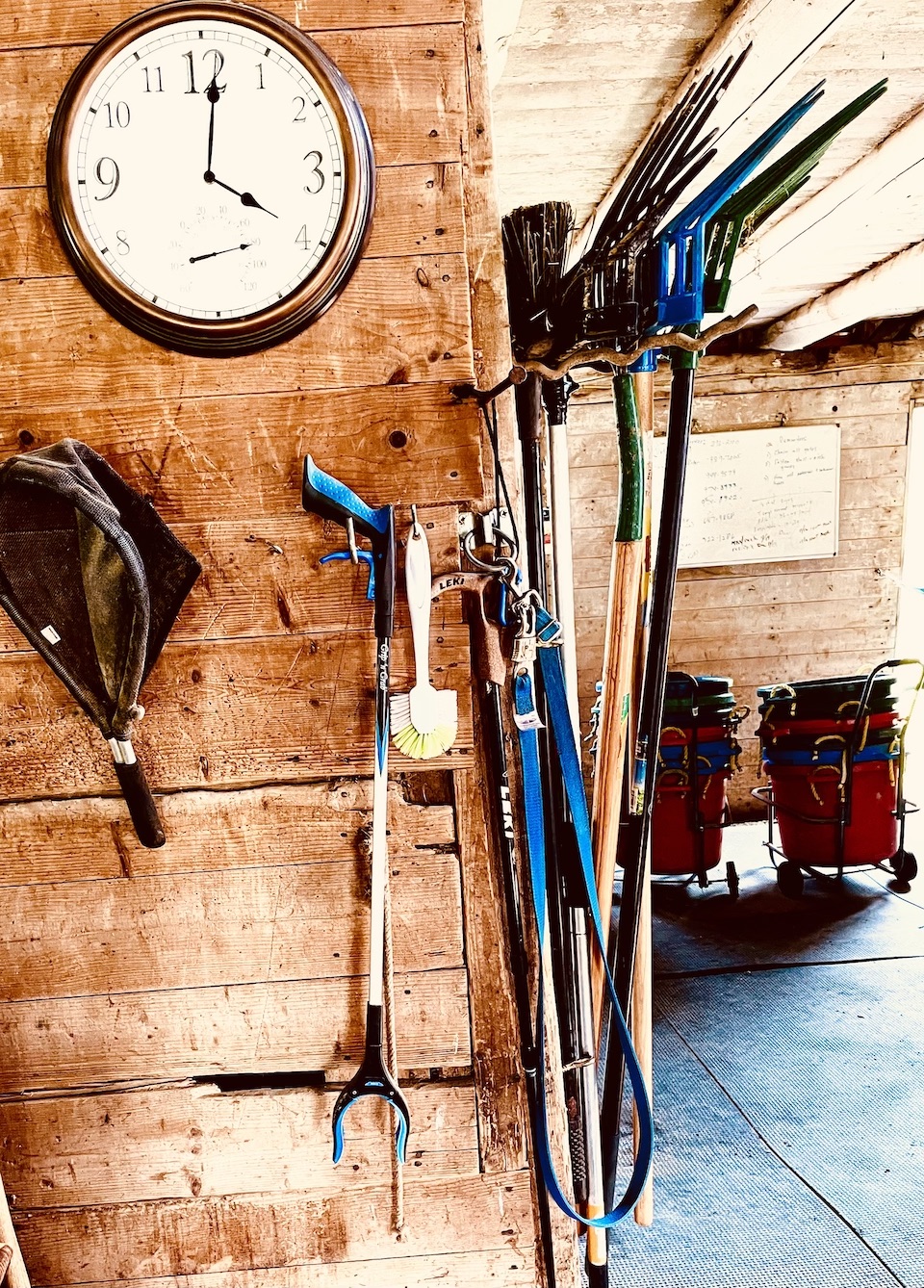
The Takeaway
Rethinking is an adventure to fit our changing bodies into environments that no longer offer us the capability to easily engage in needed, desired, and enjoyable activity.
Simple, cost effective objects, some repurposed, some cobbled, and others “as is” can supplant expensive human assistance, a process often fraught with feelings of burden and stigma.
Not everyone aspires to care for horses, but we all have activities, that as we age, become difficult to impossible if we do not rethink how to engage.
The rethinking process is not only useful in helping us maintain our activity, but in itself is a learning opportunity and an adventure.
Share Your Rethinking and Repurposing
If you have examples of how you approached rethinking and repurposing so you could keep doing what you love, please add them in the comments below.
*Disclosure: The research and opinions in this article are those of the author, and may or may not reflect the official views of Tech-enhanced Life.
If you use the links on this website when you buy products we write about, we may earn commissions from qualifying purchases as an Amazon Associate or other affiliate program participant. This does not affect the price you pay. We use the (modest) income to help fund our research.
In some cases, when we evaluate products and services, we ask the vendor to loan us the products we review (so we don’t need to buy them). Beyond the above, Tech-enhanced Life has no financial interest in any products or services discussed here, and this article is not sponsored by the vendor or any third party. See How we Fund our Work.
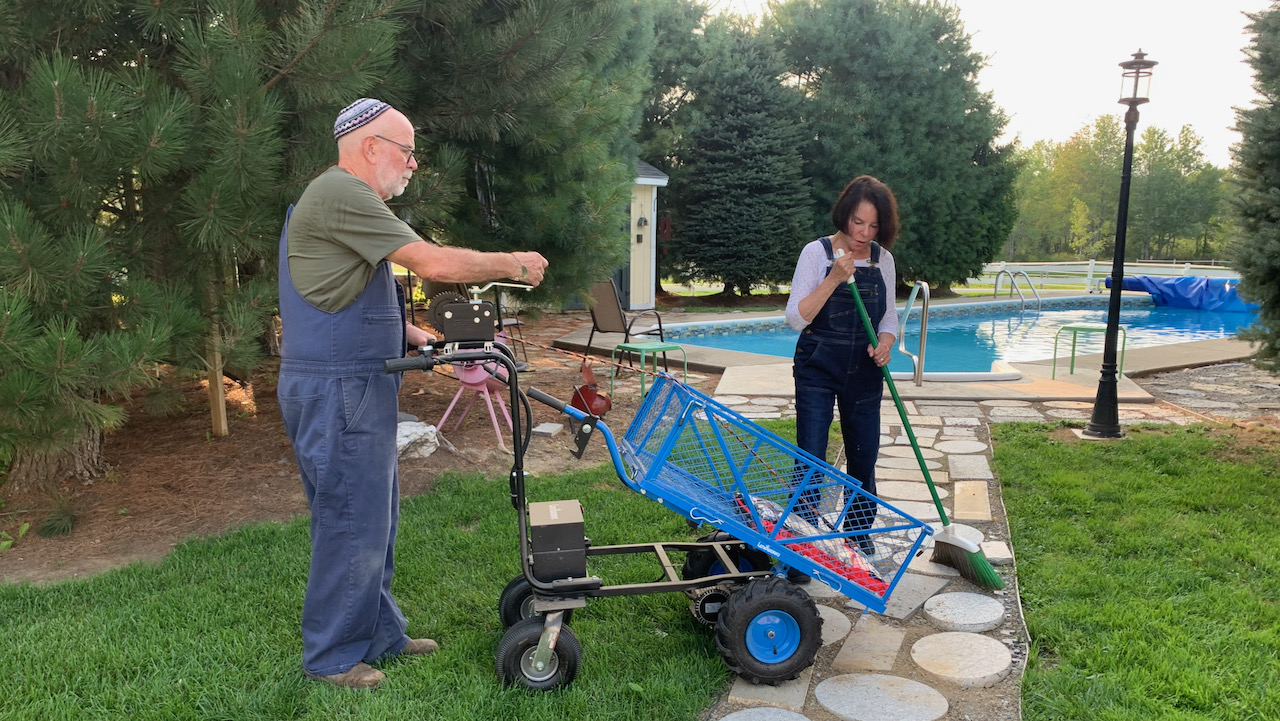


Very creative and inspiring!
Very creative and inspiring!
I strongly support the
I strongly support the rethink repurpose idea. may we have some examples for people living in apartments or other rentals, where physical changes are not so welcome?
I strongly agree with this
I strongly agree with this comment:
“from Pete Reque (unverified) at October 04, 2021
I strongly support the rethink repurpose idea. may we have some examples for people living in apartments or other rentals, where physical changes are not so welcome?”
It will be fascinating to see how many of these great solutions at the horse barn can be adapted to household tasks in one’s house or apartment. After reading this article I am optimistic!
Thanks for asking. Devices on
Thanks for asking. Devices on wheels and with batteries do not deface walks and floors. One example would be a simple leaf blower to substitute for a broom. I have a free standing battery operated winch that goes anywhere it can be bungeed in place to move objects and me. Hand trucks are a Godsend. Stephen uses one that can walk on stairs to do his carrying. We also removed some doors (not a permanent alteration) to make wheeled mobility easier for us and for moving objects through tight spaces.
I’ve found a hand truck and
I’ve found a hand truck and some instruction on simple body mechanics helped me do the gardening I love. There is, of course, a range of abilities but a discussion of how to use your body to continue to lift, carry, sit, stand, and move things might be helpful.
Altho I don’t need a walker
Altho I don’t need a walker for mobility, I have one and use it to transport my laundry, and other items that are heavy or cumbersome to move. Thinking outside of the box has led to many creative solutions, for me.
Great idea!
Great idea!
I think we need rethinking
I think we need rethinking and repurposing for apartment where we do not have room for large devices.
So what functions are you
So what functions are you hoping do accomplish more easily in the apartment. I just visited my sis who downsized and one of the issues was crowding in her living room. Smaller furniture, battery operated floor standing lighting to eliminate the trip hazard from a cable, creative use of shelving both for objects and freeing up floor space, using the "tranfer board" for sliding rahter than lifting, and of course, mobile apps. Write more about your intentions so I can be more specific.